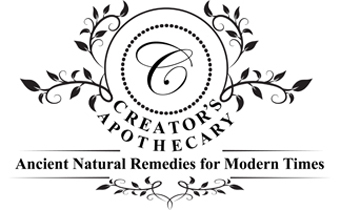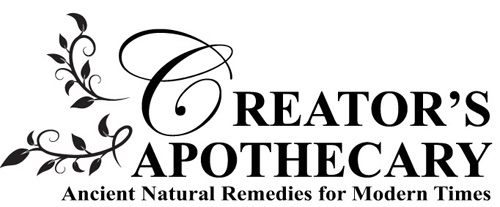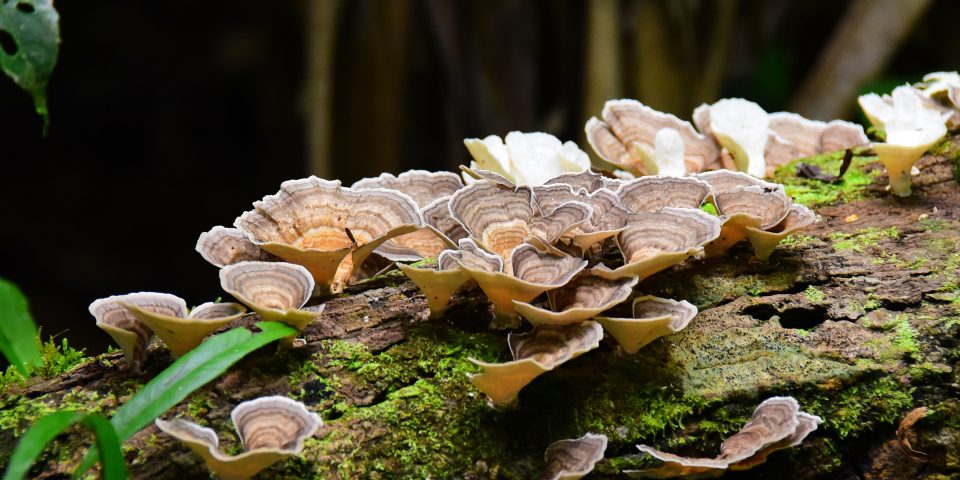Essential Oils with Antifungal Properties
The following list includes essential oils and the therapeutic antifungal properties generally attributed to them. These statements have not been evaluated by the Food and Drug Administration. These oils are not intended to diagnose, treat, cure or prevent any disease.
Antifungal or fungicidal: Prevents the growth of fungi
Essential Oil General Safety Information: Essential Oils (EOs) are highly concentrated extractions of plants and can be harmful if not used carefully. Incorporating EOs into your lifestyle should not cause unnecessary work, but it is important to heed all safety precautions. Never take EOs internally, even if a label say it is safe for consumption by mouth. Never put undiluted EOs directly onto your skin (NEAT) to avoid sensitization of skin, and never apply NEAT to broken skin. Some EOs can cause irritation, sensitization or allergic reactions in some individuals. When using a new oil topically for the first time, perform a skin patch test on a small area of the skin. Some EOs are phototoxic and can cause irritation, inflammation, blistering, redness and/or burning when exposed to UVA rays of the sun. Discontinue using EOs immediately if you encounter any irritation, redness or reaction. Take care when adding EOs directly to bathwater. EOs do not stayed mixed in water, and can, therefore “pool” causing the EO to touch body areas in full strength with the potential for irritation. Some EOs should be avoided during pregnancy or by those with asthma, epilepsy, or other health conditions. Avoid using EOs near the genitals, mouth, nose, eyes and ears. Extreme caution should be used with children and elderly (due to medication mix). Care should be taken when using EOs near animals as not all EOs are safe to use on dogs, cats, birds, horses or other pets. EOs are flammable; keep them away from fire hazards.
Essential Oils with Antifungal Properties
- Camphor – Cinnamomum camphora
- Clove – Antimicrobial actions: broad-spectrum anti-infective, immunostimulant, anti-inflammatory, deep lymphatic stimulant: a wide range of infections, especially neurological, gastrointestinal, urinary, female reproductive, dental – strong antiviral: shingles, viral neuritis, HSV-1, MS, polio, enteritis, enterocolitis, dengue fever, viral hepatitis, pleurisy, AIDS, SARS – strong broad-spectrum antibacterial: both gram-positive and gram-negative bacterial infections, including with Staph. aureus, Strep. pneumoniae/pyogenes/faecalis, Salmonella, Esch. coli, Pseudomonas, H. pylori, including gastroenteritis, food poisoning, microbial toxicosis, severe dysbiosis, mucous colitis, cholera, amoebic dysentery; pneumonia; malaria; urinary infections, salpingitis; tonsillitis, dental infections, abscesses – strong broad-spectrum antifungal: fungal infections with Candida spp., Trichophyton spp., Microsporum spp., Aspergillus spp., Sporotrychium spp., Fusarium spp., including candidiasis, athlete’s foot, nail-bed fungus, tinea/ringworm, jock itch – anthelmintic: intestinal parasites – pediculicidal: head lice (Pediculus capitis)
- Eucalyptus Citriodora – Its antibacterial action has tested strong against Staph. aureus and E. coli in particular. Like other lemony aldehyde-rich oils, it also has a strong antifungal action that can be used for any number of fungal infections, including Candida, depending on the type of administration used.
- Lemongrass – Antimicrobial actions: strong broad-spectrum antifungal: a wide range of fungal infections with Candida, Fusarium, Epidermophyton, Trichophyton, Microsporum and Aspergillus niger/ochraceus, spp., including intestinal dysbiosis, athlete’s foot, candidiasis, oral thrush, nail-bed fungus, tinea/ringworm, jock itch, antibacterial: bacterial infections, especially gastrointestinal, intestinal bacterial dysbiosis; especially with E. coli, H. pylori, Staph. aureus, Proteus, antiviral: viral infections, including HSV-1, cold sores, shingles, anthelmintic: intestinal parasites
- Manuka – Athlete’s Foot and Toe Fungus – The antifungal and antibacterial properties of manuka essential oil are well known and have been extensively researched by New Zealand’s Cawthron Institute and others. Manuka essential oil can eliminate a variety of fungi and bacteria that thrive on the feet and toes and cause athlete’s foot.
- Myrrh – common fungal infections, including with Candida albicans, including intestinal dysbiosis, thrush, athlete’s foot, ringworm/tinea, candidiasis, lung TB. Combine Myrrh and Tea tree for antifungal, antibacterial applications
- Niaouli – very strong and powerful. antimicrobial, antifungal: fungal skin infections, including athlete’s foot; psoriasis, leprosy, lichen plana, lice fungal infections with Aspergillus niger, including aspergillosis, chronic sinusitis.
- Ocotea – yeast
- Oregano – strong antifungal: fungal infections, incl. Candida spp.
- Palmarosa – strong antifungal: fungal infections with Candida spp., Trichophyton spp., Epidermophyton spp., Aspergillus spp., including oral thrush, intestinal dysbiosis, candidiasis (all types), jock itch, tinea/ringworm (all types). Palmarosa + Geranium: antifungal in all fungal infections, including fungal intestinal dysbiosis, candidiasis. Palmarosa + Niaouli: broad anti-infective and anti-inflammatory in a large range of acute infections, fungal, viral and bacterial. Palmarosa + Patchouli: antifungal and antibacterial prebiotic microfloral restorative for fungal dysbiosis, chronic irregular stool, candidiasis. Palmarosa + Lemongrass: antifungal microfloral restorative for fungal dysbiosis, chronic irregular stool, candidiasis.
- Patchouli – antifungal microfloral restorative: intestinal microflora dysbiosis, candidiasis. Antifungal: fungal infections with Candida spp., Trichophyton spp., Epidermophyton spp., Microsporum spp., including intestinal dysbiosis, candidiasis (many types), fungal skin infections including tinea/ringworm (most types)
- Pink Pepper aka Brazilian Peppertree – it has potent antibacterial and antifungal properties which make it an excellent natural remedy for infections.
- Ravintsara – Ravintsara essential oil comes from the leaves of Cinnamomum camphora or camphor tree through steam distillation. Ravintsara oil has analgesic, antibacterial, anti-inflammatory, antimicrobial, antiseptic and antiviral properties. For Herpes, Athlete’s Foot, and Ringworm. These properties help ease the pain, and inflammation, kill germs and speed healing. Add to homemade cleaning products. Herbalists have been using this oil via spray, vaporizer, and fumigants for quite some time.
- Rosalina – Rosalina essential oil is the one for you if you are looking for an alternative to tea tree oil for fighting off an assortment of problems concerning the skin — from pimples, boils to athlete’s foot. it is Analgesic, anti-anxiety, antibacterial, antifungal, antihistamine, Anti-infectious, Antibacterial, anti-inflammatory, antimicrobial, antioxidant, antispasmodic, astringent, antiviral, calming, CNS tonic, disinfectant, Immune support, immunostimulant, mucolytic, tonic.
- Rosemary cineol – moderate antifungal: including Candida spp., Aspergillus parasiticus
- Rosewood – ENDANGERED SPECIES DUE TO OVERHARVESTING – Anti-fungal properties in rosewood oil aid in treating Candida and other fungal conditions.
- Spearmint – antifungal: fungal infections with Candida spp., Aspergillus spp., Microsporum spp., Trichophyton spp. including thrush, candidiasis, fungal skin conditions, including mycoses, tinea/ringworm
- Spikenard – antifungal: fungal infections with various Aspergillus spp.
- Tagetes – Most valuable uses: Athlete’s foot, fungal infestations, corns, calluses, bunions, catarrh, coughs, chest infections, parasitic infestations
- Tea Tree – antifungal: fungal infections with Candida spp., Trichophyton spp., Malassezia spp., Aspergillus niger; incl. intestinal dysbiosis, candidiasis, thrush, nail-bed infections, tinea/ringworm, athlete’s foot, jock itch, chronic sinusitis
- Yuzu –
There are Several Species of Sweet Tea Tree Oils with monoterpenols dominant:
- Tea Tree or Narrow-leaf paperbark (Melaleuca alternifolia) (this oil profile)
with its balance of monoterpenols and monoterpenes - Nerolina (Melaleuca quinquenervia [Cav.] S.F. Blake ct. nerolidol/linalool) from northeast Australia with its floral sweet-citrus aroma because of its high
content in linalool (30–50%) and E-nerolidol (30–60%) - Rosalina, Lavender tea tree or Swamp paperbark (Melaleuca ericifolia
Smith), from Tasmania and southeast Australia, with its softer, sweeter aroma
than tea tree because of its high linalool content (35–55%) - Narrow-leaf tea tree, Sweet Tea Tree or Flaxleaf teat paperbark
(Melaleuca linariifolia Smith) from the east coast of Australia, with its mild
fresh-pungent lemony-green notes - Madagascar Niaouli (Melaleuca quinquenervia [Cav.] S.F. Blake ct. viridiflorol) from Madagascar, sweeter and less fresh-camphoraceous than Tea tree because of its low cineole content
Species of Fresh-camphoraceous Tea Tree Oils with 1,8 cineole dominant:
- Cajeput (Melaleuca cajuputi Powell) more fresh camphoraceous from its higher cineole content, but also with fruity-sweet body notes
- Niaouli or Broad-leaf paperbark/tea tree (Melaleuca quinquenervia [Cav.]
S.F. Blake ct. cineole), with its fresh-camphoraceous, somewhat sweet, lemony notes
Spicy-Warm Tea Tree Oils with the phenol eugenol dominant
- Weeping Tea Tree (Melaleuca leucadendra L.) from northwest Australia, Solomon Islands and New Guinea. A type of broad-leaf paperbark, its 99% eugenol content ensures a clove-like aroma. It is confusingly sometimes also called Cajeput tree or Cajeput oil because it was and still is commonly confused with the Cajeput tree, with which it shares its habitat.
- Black Tea Tree or White cloud tree (Melaleuca bracteata F. Muell.) from
North and northeast Australia, with its typical high eugenol (80%), clove-like
aroma; moreover, four chemotypes of this species are reported (Webb 2000).
Fresh Lemony Tea Tree Oils with either citral or citronellal dominant
- Lemon-scented Tea Tree (Leptospermum petersonii F.M. Bailey) (syn. L. flavescens var. citratum Bail. and Wht.) from coastal west Australia, with its typical pungent-lemony topnotes from the very high levels of citral and citronellal.
- Citronella Tea Tree (Leptospermum liversidgei Baker and Smith) from coastal west Australia, with high levels of either citral (55–80%) or citronellal (44%), depending on chemotype, imparting either a more lemony or citronella-like fragrance, respectively (Webb 2000).
- Broad-leaf tea tree/paperbark (Melaleuca viridiflora Gaertner) from
Northwest Australia and Papua New Guinea, which is rarely distilled, if at all.
REFERENCES:
- Aromatica: A Clinical Guide to Essential Oil Therapeutics (Vol. 1 & 2) by Peter Holmes LAc, MH
- Reference Guide for Essential Oils by Connie and Alan Higley
- The Encyclopedia of Essential Oils by Julia Lawless
Grace to you and peace from God our Father and the Lord Jesus Christ. Philippians 1:2
Til next time,




